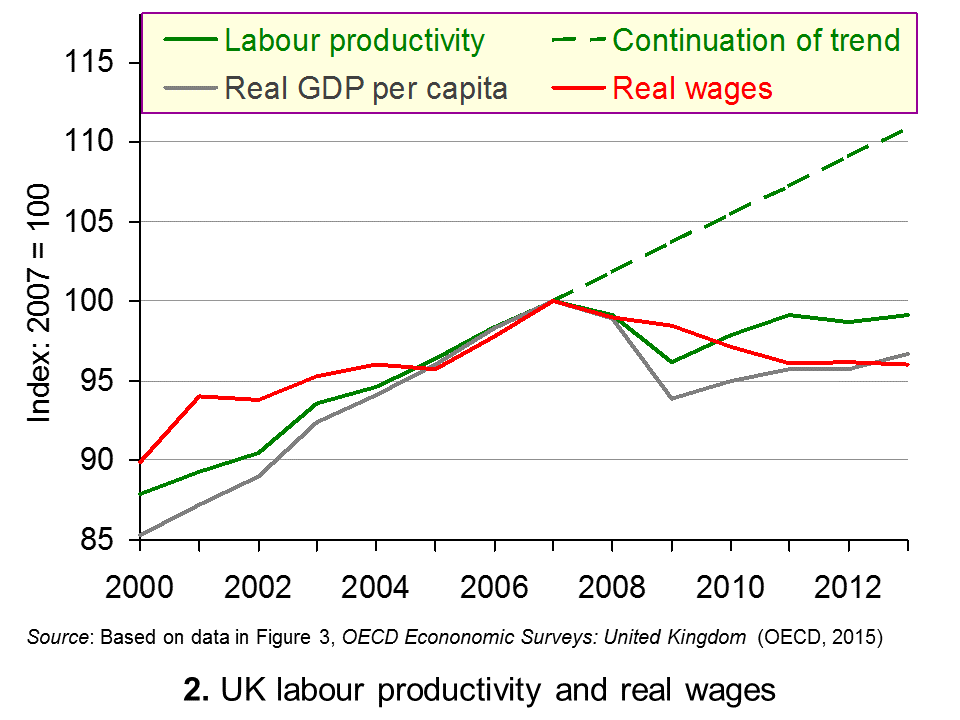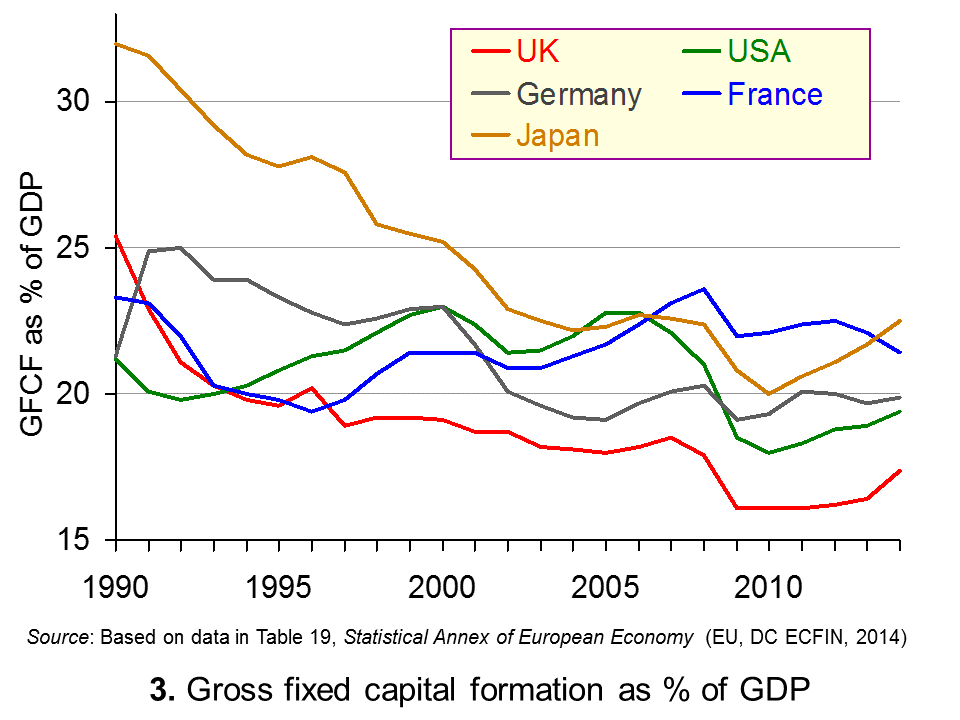 What will production look like in 20 years time? Will familiar jobs in both manufacturing and the services be taken over by robots? And if so, which ones? What will be the effect on wages and on unemployment? Will most people be better off, or will just a few gain while others get by with minimum-wage jobs or no jobs at all?
What will production look like in 20 years time? Will familiar jobs in both manufacturing and the services be taken over by robots? And if so, which ones? What will be the effect on wages and on unemployment? Will most people be better off, or will just a few gain while others get by with minimum-wage jobs or no jobs at all?
The BBC has been running a series looking at new uses for robots and whether they will take people’s jobs? This complements three reports: one by Boston Consulting one by Deloitte and an earlier one by Deloitte and Michael Osborne and Carl Frey from Oxford University’s Martin School. As Jane Wakefield, the BBC’s technology reporter states:
Boston Consulting Group predicts that by 2025, up to a quarter of jobs will be replaced by either smart software or robots, while a study from Oxford University has suggested that 35% of existing UK jobs are at risk of automation in the next 20 years.
Jobs at threat from machines include factory work, office work, work in the leisure sector, work in medicine, law, education and other professions, train drivers and even taxi and lorry drivers. At present, in many of these jobs machines work alongside humans. For example, robots on production lines are common, and robots help doctors perform surgery and provide other back-up services in medicine.
A robot may not yet have a good bedside manner but it is pretty good at wading through huge reams of data to find possible treatments for diseases.
Even if robots don’t take over all jobs in these fields, they are likely to replace an increasing proportion of many of these jobs, leaving humans to concentrate on the areas that require judgement, creativity, human empathy and finesse.
 These developments raise a number of questions. If robots have a higher marginal revenue product/marginal cost ratio than humans, will employers choose to replace humans by robots, wholly or in part? How are investment costs factored into the decision? And what about industrial relations? Will employers risk disputes with employees? Will they simply be concerned with maximising profit or will they take wider social concerns into account?
These developments raise a number of questions. If robots have a higher marginal revenue product/marginal cost ratio than humans, will employers choose to replace humans by robots, wholly or in part? How are investment costs factored into the decision? And what about industrial relations? Will employers risk disputes with employees? Will they simply be concerned with maximising profit or will they take wider social concerns into account?
Then there is the question of what new jobs would be created for those who lose their jobs to machines. According to the earlier Deloitte study, which focused on London, over 80% of companies in London say that over the next 10 years they will be most likely to take on people with skills in ‘digital know-how’, ‘management’ and ‘creativity’.
 But even if new jobs are created through the extra spending power generated by the extra production – and this has been the pattern since the start of the industrial revolution some 250 years ago – will these new jobs be open largely to those with high levels of transferable skills? Will the result be an ever widening of the income gap between rich and poor? Or will there be plenty of new jobs throughout the economy in a wide variety of areas where humans are valued for the special qualities they bring? As the authors of the later Deloitte paper state:
But even if new jobs are created through the extra spending power generated by the extra production – and this has been the pattern since the start of the industrial revolution some 250 years ago – will these new jobs be open largely to those with high levels of transferable skills? Will the result be an ever widening of the income gap between rich and poor? Or will there be plenty of new jobs throughout the economy in a wide variety of areas where humans are valued for the special qualities they bring? As the authors of the later Deloitte paper state:
The dominant trend is of contracting employment in agriculture and manufacturing being more than offset by rapid growth in the caring, creative, technology and business services sectors.
The issues of job replacement and job creation, and of the effects on income distribution and the balance between work and leisure, are considered in the following videos and articles, and in the three reports.
Videos
 What is artificial intelligence? BBC News, Valery Eremenko (13/9/15)
What is artificial intelligence? BBC News, Valery Eremenko (13/9/15)
 What jobs will robots take over? BBC News, David Botti (15/8/14)
What jobs will robots take over? BBC News, David Botti (15/8/14)
 Could a robot do your job? BBC News, Rory Cellan-Jones (14/9/15)
Could a robot do your job? BBC News, Rory Cellan-Jones (14/9/15)
 Intelligent machines: The robots that work alongside humans BBC News, Rory Cellan-Jones (14/9/15)
Intelligent machines: The robots that work alongside humans BBC News, Rory Cellan-Jones (14/9/15)
 Intelligent machines: Will you be replaced by a robot? BBC News, John Maguire (14/9/15)
Intelligent machines: Will you be replaced by a robot? BBC News, John Maguire (14/9/15)
 Will our emotions change the way adverts work? BBC News, Dan Simmons (24/7/15)
Will our emotions change the way adverts work? BBC News, Dan Simmons (24/7/15)
 Could A Robot Do My Job? BBC Panorama, Rohan Silva (14/9/15)
Could A Robot Do My Job? BBC Panorama, Rohan Silva (14/9/15)
Articles
Technology has created more jobs in the last 144 years than it has destroyed, Deloitte study finds Independent, Doug Bolton (18/8/15)
Technology has created more jobs than it has destroyed, says 140 years of data The Guardian, Katie Allen (18/8/15)
Will a robot take your job? BBC News (11/9/15)
Intelligent Machines: The jobs robots will steal first BBC News, Jane Wakefield (14/9/15)
Robots Could Take 35 Per Cent Of UK Jobs In The Next 20 Years Says New Study Huffington Post, Thomas Tamblyn (14/9/15)
The new white-collar fear: will robots take your job? The Telegraph, Rohan Silva (12/9/15)
Does technology destroy jobs? Data from 140 years says no Catch news, Sourjya Bhowmick (11/9/15)
Reports
Takeoff in Robotics Will Power the Next Productivity Surge in Manufacturing Boston Consulting Group (10/2/15)
Agiletown: the relentless march of technology and London’s response Deloitte (November 2014)
Technology and people: The great job-creating machine Deloitte, Ian Stewart, Debapratim De and Alex Cole (August 2015)
Questions
- Which are the fastest growing and fastest declining occupations? To what extent can these changes be explained by changes in technology?
- What type of unemployment is caused by rapid technological change?
- Why, if automation replaces jobs, have jobs increased over the past 250 years?
- In what occupations is artificial intelligence (AI) most likely to replace humans?
- To what extent are robots and humans complementary rather than substitute inputs into production?
- “Our analysis of more recent employment data also reveals a clear pattern to the way in which technology has affected work.” What is this pattern? Explain.
- Why might AI make work more interesting for workers?
- Using a diagram, show how an increase in workers’ marginal productivity from working alongside robots can result in an increase in employment. Is this necessarily the case? Explain.
 ‘Employment has been strong, but productivity and real wages have been flat.’ This is one of the key observations in a new OECD report on the state of the UK economy. If real incomes for the majority of people are to be raised, then labour productivity must rise.
‘Employment has been strong, but productivity and real wages have been flat.’ This is one of the key observations in a new OECD report on the state of the UK economy. If real incomes for the majority of people are to be raised, then labour productivity must rise.
For many years, the UK has had a lower productivity (in terms of output per hour worked) than most other developed countries, with the exception of Japan. But from 1980 to the mid 2000s, the gap was gradually narrowing. Since then, however, the gap has been widening again. This is illustrated in Chart 1, which shows countries’ productivity relative to the UK’s (with the UK set at 100). (Click here for a PowerPoint.)
Compared with the UK, GDP per hour worked in 2013 (the latest data available) was 28% higher in France, 29% higher in Germany and 30% higher in the USA. What is more, GDP per hour worked  and GDP per capita in the UK fell by 3.8% and 6.1% respectively after the financial crisis of 2007/8 (see the green and grey lines in Chart 2). And while both indicators began rising after 2009, they were still both below their 2007 levels in 2013. Average real wages also fell after 2007 but, unlike the other two indicators, kept on falling and by 2013 were 4% below their 2007 levels, as the red line in Chart 2 shows. (Click here for a PowerPoint.)
and GDP per capita in the UK fell by 3.8% and 6.1% respectively after the financial crisis of 2007/8 (see the green and grey lines in Chart 2). And while both indicators began rising after 2009, they were still both below their 2007 levels in 2013. Average real wages also fell after 2007 but, unlike the other two indicators, kept on falling and by 2013 were 4% below their 2007 levels, as the red line in Chart 2 shows. (Click here for a PowerPoint.)
Although productivity and even real wages are rising again, the rate of increase is slow. If productivity is to rise, there must be investment.  This could be in physical capital, human capital or, preferably, both. But for many years the UK has had a lower rate of investment than other countries, as Chart 3 shows. (Click here for a PowerPoint.) This chart measures investment in fixed capital as a percentage of GDP.
This could be in physical capital, human capital or, preferably, both. But for many years the UK has had a lower rate of investment than other countries, as Chart 3 shows. (Click here for a PowerPoint.) This chart measures investment in fixed capital as a percentage of GDP.
So how can investment be encouraged? Faster growth will encourage greater investment through the accelerator effect, but such an effect could well be short-lived as firms seek to re-equip but may be cautious about committing to increasing capacity. What is crucial here is maintaining  high degrees of business confidence over an extended period of time.
high degrees of business confidence over an extended period of time.
More fundamentally, there are structural problems that need tackling. One is the poor state of infrastructure. This is a problem not just in the UK, but in many developed countries, which cut back on public and private investment in transport, communications and energy infrastructure in an attempt to reduce government deficits after the financial crisis. Another is the low level of skills of many workers. Greater investment in training and apprenticeships would help here.
Then there is the question of access to finance. Although interest rates are very low, banks are cautious about granting long-term loans to business. Since the financial crisis banks have become much more risk averse and long-term loans, by their nature, are relatively risky. Government initiatives to provide finance to private companies may help here. For example the government has just announced a Help to Grow scheme which will provide support for 500 small firms each year through the new British Business Bank, which will provide investment loans and also grants on a match funding basis for new investment.
Articles
OECD: UK must fix productivity Economia, Oliver Griffin (25/2/15)
The UK’s productivity puzzle BBC News, Lina Yueh (24/2/15)
OECD warns UK must fix productivity problem to raise living standards The Guardian, Katie Allen (24/2/15)
Britain must boost productivity to complete post-crisis recovery, says OECD International Business Times, Ian Silvera (24/2/15)
OECD urges UK to loosen immigration controls on skilled workers Financial Times, Emily Cadman and Helen Warrell (24/2/15)
Report
OECD Economic Surveys, United Kingdom: Overview OECD (February 2015)
OECD Economic Surveys, United Kingdom: Full report OECD (February 2015)
Questions
- In what ways can productivity be measured? What are the relative merits of using the different measures?
- Why has the UK’s productivity lagged behind other industrialised countries?
- What is the relationship between income inequality and labour productivity?
- Why has UK investment been lower than in other industrialised countries?
- What are zombie firms? How does the problem of zombie firms in the UK compare with that in other countries? Explain the differences.
- What policies can be pursued to increased labour productivity?
- What difficulties are there in introducing effective policies to tackle low productivity?
- Should immigration controls be lifted to tackle the problem of a shortage of skilled workers?
 In a post last August we looked at the rising number of workers employed on ‘zero-hours’ contracts. These are contracts where there are no guaranteed minimum hours. Such contracts give employers the flexibility to employ workers as much or as little as suits the business. Sometimes it benefits workers, who might be given the flexibility to request the hours that suit them, but usually workers simply have to take the hours on offer.
In a post last August we looked at the rising number of workers employed on ‘zero-hours’ contracts. These are contracts where there are no guaranteed minimum hours. Such contracts give employers the flexibility to employ workers as much or as little as suits the business. Sometimes it benefits workers, who might be given the flexibility to request the hours that suit them, but usually workers simply have to take the hours on offer.
Latest figures published by the Office for National Statistics show that zero-hours contracts are on the increase. In 2014 quarter 4, 697,000 workers were recorded as being on zero-hours contracts.  This represents 2.3% of people in employment. Ten years ago (2004, Q4) the figures were 108,000 or 0.4%: see chart. (Click here for a PowerPoint of the chart.)
This represents 2.3% of people in employment. Ten years ago (2004, Q4) the figures were 108,000 or 0.4%: see chart. (Click here for a PowerPoint of the chart.)
Around one third of the 697,000 people on zero-hours contracts wanted more work if they could get it and most wanted it in their current job rather than having to move jobs. These people wanting more work can be classed as underemployed. They also include those not on a zero-hours contract who would like to work more if they could.
According to the ONS:
‘People on zero-hours contracts are more likely to be women, in full-time education or in young or older age groups when compared with other people in employment. On average, someone on a zero-hours contract usually works 25 hours a week.’ (See section 4 of the report for more details.)
As we saw in the earlier post, many public- and private-sector employers use such contracts, including many small and medium-sized enterprises and many well-known large companies, such as Sports Direct, Amazon, JD Wetherspoon and Cineworld. It gives them the flexibility to adjust the hours they employ people. It allows them to keep people in employment when demand is low. It also makes them more willing to take on staff when demand rises, as it removes the fear of being over-staffed if demand then falls back.
 As we also saw, zero-hours contracts are not the only form of flexible working. Other examples include: ‘self-employed’ workers, contracted separately for each job they do for a company; people paid largely or wholly on commission; on-call working; part-time working, where the hours are specified in advance, but where these are periodically re-negotiated; overtime; people producing a product or service for a company (perhaps at home), where the company varies the amount paid per unit according to market conditions.
As we also saw, zero-hours contracts are not the only form of flexible working. Other examples include: ‘self-employed’ workers, contracted separately for each job they do for a company; people paid largely or wholly on commission; on-call working; part-time working, where the hours are specified in advance, but where these are periodically re-negotiated; overtime; people producing a product or service for a company (perhaps at home), where the company varies the amount paid per unit according to market conditions.
The extent of zero-hours contracts varies dramatically from one sector of the economy to another. Only 0.6% of workers in the Information, Finance and Professional sectors were on zero-hours contracts in 2014 Q4, whereas 10% in the Accommodation and Food sectors were.
The flexibility that such contracts give employers may make them more willing to keep on workers when demand is low – they can reduce workers’ hours rather than laying them off. It also may make them more willing to take on workers (or increase their hours) when demand is expanding, not having to worry about being over staffed later on.
However, many workers on such contracts find it hard to budget when their hours are not guaranteed and can vary significantly from week to week.
Articles
lmost 700,000 people in UK have zero-hours contract as main job The Guardian, Phillip Inman (25/2/15)
UK firms use 1.8m zero-hours contracts, says ONS BBC News (25/1/15)
Zero-hours contracts jump in UK Financial Times, Emily Cadman (25/2/15)
Zero-hours contracts ‘disturbingly’ hit 1.8 million in 2014 International Business Times, Ian Silvera (25/2/15)
Zero-hours contracts a reality for almost 700,000 UK workers, ONS figures show Independent, Antonia Molloy (25/1/15)
Data
Contracts with No Guaranteed Hours, Zero Hour Contracts, 2014 ONS Release (25/1/15)
Supplementary LFS data on zero hours contracts – October to December 2014 ONS dataset (25/2/15)
Analysis of Employee Contracts that do not Guarantee a Minimum Number of Hours ONS Report (25/1/15)
Questions
- Distinguish between open unemployment, disguised unemployment and underemployment?
- Distinguish between functional, numerical and financial flexibility? Which type or types of flexibility do zero-hours contracts give the firm?
- In a ‘flexible’ labour market, what forms can that flexibility take?
- Why does the Accommodation and Food sector have a relatively high proportion of people employed on zero-hours contracts?
- What are the benefits and costs to employers of using zero-hours contracts?
- If a company introduces a system of zero-hours contracts, is this in accordance with the marginal productivity theory of profit maximisation from employment?
- What are the benefits and costs to employees of working on zero-hours contracts?
- Why has the use of zero-hours contracts risen so rapidly?
- Using the ONS data, find out how the use of zero-hours contracts varies by occupation and explain why.
- Identify what forms of flexible contracts are used for staff in your university or educational establishment. Do they benefit (a) staff; (b) students?
- Consider the arguments for and against (a) banning and (b) regulating zero-hours contracts.
 Despite the prolonged stagnation in the UK, unemployment has not soared. In fact, over the past two years the ILO unemployment rate (see here for a definition) has fallen slightly – from 8.6% in October 2011 to around 8.0% today. What is more, the claimant count rate is considerably lower than the ILO rate – at around 4.4%.
Despite the prolonged stagnation in the UK, unemployment has not soared. In fact, over the past two years the ILO unemployment rate (see here for a definition) has fallen slightly – from 8.6% in October 2011 to around 8.0% today. What is more, the claimant count rate is considerably lower than the ILO rate – at around 4.4%.
Part of the reason for the relatively good unemployment figures is the rise in ‘zero-hours contracts’. These allow employers to cut the hours that people work without laying them off. The Office for National Statistics estimates that last year (2012) 250,000 people, or 0.84% of the workforce, were on such contracts.
But just what is meant by ‘zero-hours contracts’? According to the ONS:
People on zero-hours contracts are classified as being in employment regardless of the number of hours they actually worked during the survey reference week. This includes anyone who was not required to work any hours during the reference week whilst remaining on their current contract of employment. The continued existence of the contract of employment is the key determinant of their employment status in these situations.
If people are working less than they would like to, this is classified as underemployment, but such people do not appear in the unemployment statistics. Such contracts thus mask the true extent of surplus labour in the economy.
The Chartered Institute of Personnel and Development (CIPD) puts the figure much higher than the ONS. In the Summer 2013 issue of its Labour Market Outlook, it estimates that one million workers are on zero-hours contracts.
 Many employers use such contracts, including many voluntary-sector and public-sector organisations, including the NHS, local councils and Buckingham Palace. They are also used by many small and medium-sized enterprises and many well-known large companies, such as Sports Direct, Amazon, JD Wetherspoon and Cineworld. It gives them the flexibility to adjust the hours they employ people. It allows them to keep people in employment when demand is low. It also makes them more willing to take on staff when demand rises, as it removes the fear of being over-staffed if demand then falls back.
Many employers use such contracts, including many voluntary-sector and public-sector organisations, including the NHS, local councils and Buckingham Palace. They are also used by many small and medium-sized enterprises and many well-known large companies, such as Sports Direct, Amazon, JD Wetherspoon and Cineworld. It gives them the flexibility to adjust the hours they employ people. It allows them to keep people in employment when demand is low. It also makes them more willing to take on staff when demand rises, as it removes the fear of being over-staffed if demand then falls back.
But many workers dislike such contracts, which give them fewer employment rights and fewer hours than they would like to work. It also makes it difficult to budget when future income is uncertain. It also make credit and mortgages harder to obtain, as people have no guaranteed income. Another complaint is that companies may use the threat of lower hours as a tool to bully staff and get away with poorer working conditions.
In May of this year, the Business Secretary, Vince Cable, announced that he was setting up a review of zero hours contracts.
 Note that zero hours are not the only form of flexible working. Other examples include: ‘self-employed’ workers, contracted separately for each job they do for a company; people paid largely or wholly on commission; on-call working; part-time working, where the hours are specified in advance, but where these are periodically re-negotiated; overtime; people producing a product or service for a company (perhaps at home), where the company varies the amount paid per unit according to market conditions.
Note that zero hours are not the only form of flexible working. Other examples include: ‘self-employed’ workers, contracted separately for each job they do for a company; people paid largely or wholly on commission; on-call working; part-time working, where the hours are specified in advance, but where these are periodically re-negotiated; overtime; people producing a product or service for a company (perhaps at home), where the company varies the amount paid per unit according to market conditions.
The following videos and articles look at the issue in some detail: at the extent of the practice and at its benefits to employers and its costs (and some benefits) to workers. Both The Guardian and the BBC have an extensive range of articles on the topic.
Webcasts
 Do zero hours contracts create real jobs? BBC Newsnight, Allegra Stratton (14/8/12)
Do zero hours contracts create real jobs? BBC Newsnight, Allegra Stratton (14/8/12)
 Record number of ‘Zero Hours Contracts’ ITV News on YouTube, Laura Kuenssberg (2/5/13)
Record number of ‘Zero Hours Contracts’ ITV News on YouTube, Laura Kuenssberg (2/5/13)
 Britons rally against ‘Zero Hour’ contracts Al Jazeera on YouTube (4/8/13)
Britons rally against ‘Zero Hour’ contracts Al Jazeera on YouTube (4/8/13)
 Anger at Amazon working conditions Channel 4 News (1/8/13)
Anger at Amazon working conditions Channel 4 News (1/8/13)
 Government to include Amazon in its zero hours probe Channel 4 News (2/8/13)
Government to include Amazon in its zero hours probe Channel 4 News (2/8/13)
 Councils using zero hours contracts BBC London, Warren Nettleford (31/7/13)
Councils using zero hours contracts BBC London, Warren Nettleford (31/7/13)
Podcasts
 The real economy: Labour market BBC Today Programme, Evan Davis (24/8/11)
The real economy: Labour market BBC Today Programme, Evan Davis (24/8/11)
 Zero hour contracts ‘just the norm’ BBC Today Programme, Rochelle Monte and Peter Cheese (5/8/13)
Zero hour contracts ‘just the norm’ BBC Today Programme, Rochelle Monte and Peter Cheese (5/8/13)
Articles
Zero-hours contracts: One million British workers could be affected Independent, Nigel Morris (5/8/13)
Zero hours contracts “spreading like wildfire”, official stats show Union News, Pete Murray (1/8/13)
Zero-hours contracts: what are they? The Guardian, Phillip Inman (30/7/13)
Buckingham Palace uses zero-hours contracts for summer staff The Guardian, Simon Neville, Matthew Taylor and Phillip Inman (30/7/13)
Nick Clegg: business department will investigate zero-hours contracts The Guardian,
Patrick Wintour, Simon Neville, Matthew Taylor and Phillip Inman (31/7/13)
Zero-hours contracts are not unavoidable The Guardian, Phillip Inman (1/8/13)
ONS admits it underestimated number of zero-hours contracts The Guardian, Simon Neville (1/8/13)
Zero-hours contract workers – the new reserve army of labour? The Guardian, Philip Inman (4/8/13)
Zero-hours contracts cover more than 1m UK workers The Guardian, Simon Goodley and Phillip Inman (5/8/13)
Zero-hours contracts use by councils needs to be moderated The Guardian, Vidhya Alakeson (5/8/13)
If zero-hours contracts are driving this ‘recovery’, it’s a lousy kind of recover The Guardian, Deborah Orr (9/8/13)
ONS increases its estimate of workers on zero hours contracts Financial Times, John Aglionby (1/8/13)
Zero Hours Herald Scotland, Ian Bell and Scott Dickson (4/8/13)
Sports Direct protests planned over zero hours contracts Channel 4 News (3/8/13)
Cable warns of exploitation of zero-hours contracts BBC News (5/8/13)
Q&A: What are zero-hours contracts? BBC News (5/8/13)
Record number of 16-24s on zero hours contracts at work BBC Newsbeat, Jim Reed (15/5/13)
Figures show 18-24s most likely on zero-hours contract BBC Newsbeat, Jim Reed and Amelia Butterly (5/8/13)
Andy Burnham calls for ban on zero hours contracts BBC News (28/4/13)
Zero-hours contracts: What is it like living on one? BBC News, Sean Clare (5/8/13)
Small Talk: Zero-hours contracts? Key for growth Independent, David Prosser (5/8/13)
Zero Hour Contracts Manchester based law firm, Emma Cross (30/7/13)
Data
People and proportion in employment on a zero-hour contract ONS (31/7/13)
Estimating Zero-Hour Contracts from the Labour Force Survey ONS (26/7/13)
One million workers on zero hours contracts, finds CIPD study CIPD, Michelle Stevens (5/8/13)
Labour Market Outlook CIPD
Questions
- Distinguish between open unemployment, disguised unemployment and underemployment?
- Distinguish between functional, numerical and financial flexibility? Which type or types of flexibility do zero-hours contracts give the firm?
- Identify the various benefits to employers of zero-hours contracts?
- What are the costs and benefits to workers of such contracts?
- Identify what forms of flexible contracts are used for staff in your university or educational establishment. Do they benefit (a) staff; (b) students?
- Are zero-hours contracts fair?
- In what ways do zero-hours contracts transfer risks from employers to employees?
- If a company introduces a system of zero-hours contracts, is this in accordance with the marginal productivity theory of profit maximisation from employment?
- From the perspective of the employer, how do the benefits of zero-hours contracts compare with other forms of flexible working?
- Consider the arguments for and against (a) banning and (b) regulating zero-hours contracts.
There is a growing consensus amongst the political parties in the UK that something needs to be done to end the huge pay rises of senior executives. According to the High Pay Commission, directors of FTSE 100 companies saw their remuneration packages rise by 49% in 2010. Average private-sector employees’ pay, by contrast, rose by a mere 2.7% (below the CPI rate of inflation for 2010 of 3.3% and well below the RPI inflation rate of 4.6%), with many people’s wages remaining frozen, especially in the public sector. (See Directing directors’ pay.) In 1979 the top 0.1% took home 1.3% of GDP; today the figure is 7%.
But agreeing that something needs to be done, does not mean that the parties agree on what to do. The Prime Minister, reflecting the views of Conservative ministers, has called for binding shareholder votes on top executives’ pay. The Liberal Democrats go further and are urging remuneration committees to be opened up to independent figures who would guard against the cosy arrangement whereby company heads set each other’s pay. The Labour Party is calling for worker representation on remuneration committees, simplifying remuneration packages into salary and just one performance-related element, and publishing tables of how much more bosses earn than various other groups of employees in the company.
So what measures are likely to be the most successful in reining in executive pay and what are the drawbacks of each measure? The following articles consider the problem and the proposals.
Articles
Parties draw up battle lines over excessive executive pay Guardian, Patrick Wintour and Nicholas Watt (9/1/12)
 David Cameron’s plans for executive pay may not end spiralling bonuses Guardian, Jill Treanor (8/1/12)
David Cameron’s plans for executive pay may not end spiralling bonuses Guardian, Jill Treanor (8/1/12)
Executive pay: what would Margaret Thatcher have done? Guardian Politics Blog, Michael White (9/1/12)
Businesses tell the PM he’s wrong about ‘fat cat’ pay Independent, Nigel Morris (9/1/12)
Directors’ pay is not the Government’s business The Telegraph, Telegraph View (9/1/12)
I’ll end merry go round of bosses’ pay, says David Cameron Scotsman (9/1/12)
Find a place at the table for public interest directors Scotsman, leader (9/1/12)
Cameron vows executive pay crackdown Financial Times, George Parker (9/1/12)
Q&A: Voting on executive pay BBC News (8/1/12)
 Will shareholders crack down on executive pay? BBC News, Robert Peston (8/1/12)
Will shareholders crack down on executive pay? BBC News, Robert Peston (8/1/12)
Why didn’t investors stop high executive pay? BBC News, Robert Peston (9/1/12)
Report
Cheques With Balances: why tackling high pay is in the national interest Final report of the High Pay Commission (22/11/11)
Questions
- Why has the remuneration of top executives risen so much faster than average pay?
- What market failures are there in the determination of executive pay?
- What insights can the theory of oligopoly give into the determination of executive pay?
- Compare the proposals of the three main parties in the UK for tackling excessive executive pay?
- To what extent is it in the interests of shareholders to curb executive pay?
- Why may it be difficult to measure the marginal productivity of senior executives?
- To what extent would greater transparency about pay awards help to curb their size?
- What moral hazards are involved in giving large increases in remuneration to senior executives?
 What will production look like in 20 years time? Will familiar jobs in both manufacturing and the services be taken over by robots? And if so, which ones? What will be the effect on wages and on unemployment? Will most people be better off, or will just a few gain while others get by with minimum-wage jobs or no jobs at all?
What will production look like in 20 years time? Will familiar jobs in both manufacturing and the services be taken over by robots? And if so, which ones? What will be the effect on wages and on unemployment? Will most people be better off, or will just a few gain while others get by with minimum-wage jobs or no jobs at all? These developments raise a number of questions. If robots have a higher marginal revenue product/marginal cost ratio than humans, will employers choose to replace humans by robots, wholly or in part? How are investment costs factored into the decision? And what about industrial relations? Will employers risk disputes with employees? Will they simply be concerned with maximising profit or will they take wider social concerns into account?
These developments raise a number of questions. If robots have a higher marginal revenue product/marginal cost ratio than humans, will employers choose to replace humans by robots, wholly or in part? How are investment costs factored into the decision? And what about industrial relations? Will employers risk disputes with employees? Will they simply be concerned with maximising profit or will they take wider social concerns into account? But even if new jobs are created through the extra spending power generated by the extra production – and this has been the pattern since the start of the industrial revolution some 250 years ago – will these new jobs be open largely to those with high levels of transferable skills? Will the result be an ever widening of the income gap between rich and poor? Or will there be plenty of new jobs throughout the economy in a wide variety of areas where humans are valued for the special qualities they bring? As the authors of the later Deloitte paper state:
But even if new jobs are created through the extra spending power generated by the extra production – and this has been the pattern since the start of the industrial revolution some 250 years ago – will these new jobs be open largely to those with high levels of transferable skills? Will the result be an ever widening of the income gap between rich and poor? Or will there be plenty of new jobs throughout the economy in a wide variety of areas where humans are valued for the special qualities they bring? As the authors of the later Deloitte paper state: What is artificial intelligence? BBC News, Valery Eremenko (13/9/15)
What is artificial intelligence? BBC News, Valery Eremenko (13/9/15) What jobs will robots take over? BBC News, David Botti (15/8/14)
What jobs will robots take over? BBC News, David Botti (15/8/14) Could a robot do your job? BBC News, Rory Cellan-Jones (14/9/15)
Could a robot do your job? BBC News, Rory Cellan-Jones (14/9/15) Intelligent machines: The robots that work alongside humans BBC News, Rory Cellan-Jones (14/9/15)
Intelligent machines: The robots that work alongside humans BBC News, Rory Cellan-Jones (14/9/15) Intelligent machines: Will you be replaced by a robot? BBC News, John Maguire (14/9/15)
Intelligent machines: Will you be replaced by a robot? BBC News, John Maguire (14/9/15) Will our emotions change the way adverts work? BBC News, Dan Simmons (24/7/15)
Will our emotions change the way adverts work? BBC News, Dan Simmons (24/7/15) Could A Robot Do My Job? BBC Panorama, Rohan Silva (14/9/15)
Could A Robot Do My Job? BBC Panorama, Rohan Silva (14/9/15)








